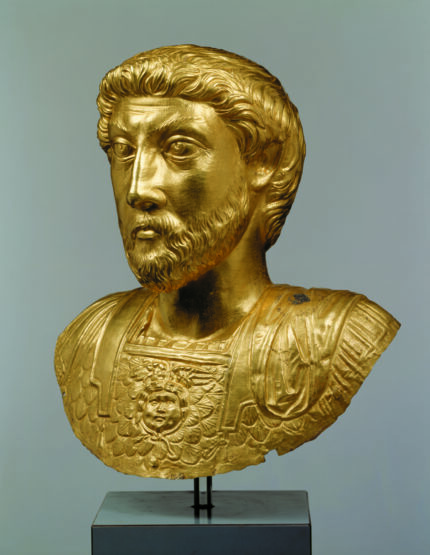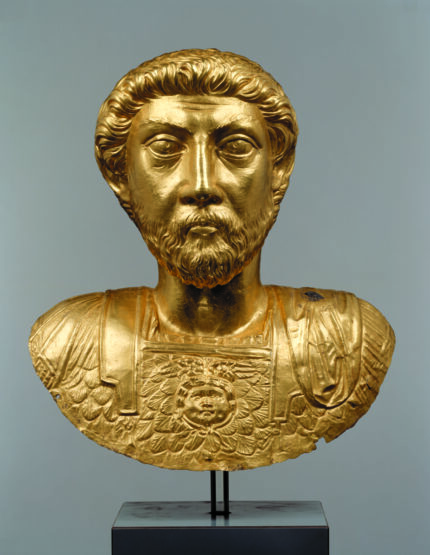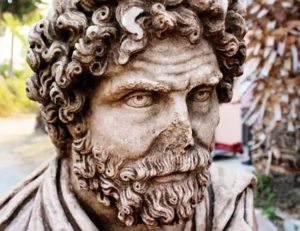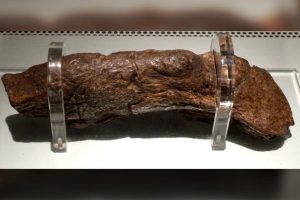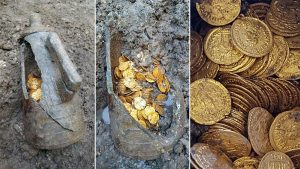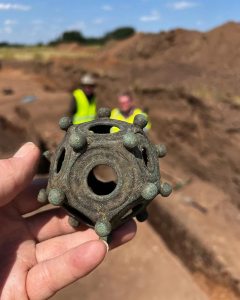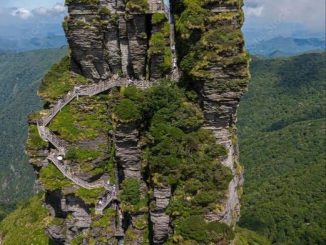The golden bust of Emperor Marcus Aurelius from Avenches, western Switzerland, is going on display at the Getty. It is the largest known bust of an emperor made of a precious metal and one of only a handful of gold busts to escape being melted down. This Marcus Aurelius bust is so rare and so valuable that it is usually kept in a bank vault. The Roman Museum of Avenches keeps a copy on display instead. It has only been exhibited a dozen times, and never before in the United States.
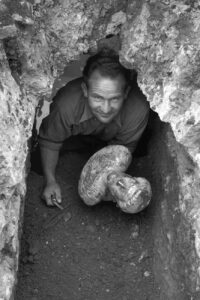
The bust was discovered in 1939 in an excavation of a temple at Avenches’ ancient predecessor, Aventicum. Aventicum was the capital of the Helvetii and was incorporated into the Roman Empire under Augustus in 15 B.C. It was granted colony status by Vespasian in 71/2 A.D. which spurred a major urban redevelopment of the city. A large temple complex inspired by Vespasian’s Templum Pacis in Rome and dedicated to the local gods of the Helvetii and the cult of the emperor was built during this time.
Found in a sewer crossing underneath the main courtyard of the temple complex, the golden bust is 13 inches high and weighs 3.5 lbs, the equivalent of 220 gold aurei from Marcus Aurelius’ time (r. 161-180 AD). It is made from a single sheet of gold that was cold-worked in a repoussé technique. The goldsmith hammered the back of the sheet to create the features of the emperor in three dimensions — a thick head of hair, neat beard, intense eyes. Fine details were incised on to the exterior surface after the repoussé was complete. He wears a lorica plumata, a cuirass decorated with rows of feathers, around a central gorgoneion.
Only about 15 imperial portraits in precious metals and only six of those in gold made it through the gauntlet of being destroyed in antiquity for the value of their weight. Hollow, portable and requiring a support to stand, this type of portrait was created to be an imago, an effigy of the emperor meant to embody his sacred authority in processions and in temples dedicated to the imperial cult. Marcus Aurelius wrote in a letter in 162/3 A.D. to the curator of the temple at Ephesos that portraits of past emperors should never be altered to look like other emperors (a common practice with marble portraits) or melted down.

“There must be no re-working of the material into likenesses of us. For as we are not in other respects solicitous of honours for ourselves, much less should we permit those of others to be transferred to us. As many of the statues as are in good preservation should be kept under their original names, but with respect to those that are too battered to be identified, perhaps their titles can be recovered from inscriptions on their bases or from records that may exist in the possession of the Council, so that our progenitors may rather receive a renewal of their honour than its extinction through the melting down of their images.”
